In the forest life cycle, what goes up must come down. Michigan Tech's School of Forest Resources and Environmental Science capitalizes on plant-to-harvest teachable moments as experienced students show first-year Huskies how to fell and process trees as they prepare to host Woodchuck Games at Ford Forest.
The repurposed trees (one felled during each of four demonstrations last week) are cut up on site in a portable sawmill, bringing the learning experience full circle. But first, students in Tara Bal's field techniques class learn how to measure trees. They also use densitometers to determine the percentage of forest-canopy coverage. Teaching assistant Laura Jacobs supervised the lab on pre-marked trees on the Tech Trails.
"Know where 4.5 feet lands on your body, so you don't have to remeasure DBH (diameter at breast height)," Jacobs says, handing out stickers to students who want to mark themselves.
Next, the class works with clinometers—line-of-sight meters—pacing out a 66-foot distance to gauge tree height, and then Biltmore sticks, used to determine the quantity of merchantable saw logs in soft- and hardwood trees.
"At some point, people get really good at estimating," Jacobs tells students. "It takes time and practice."
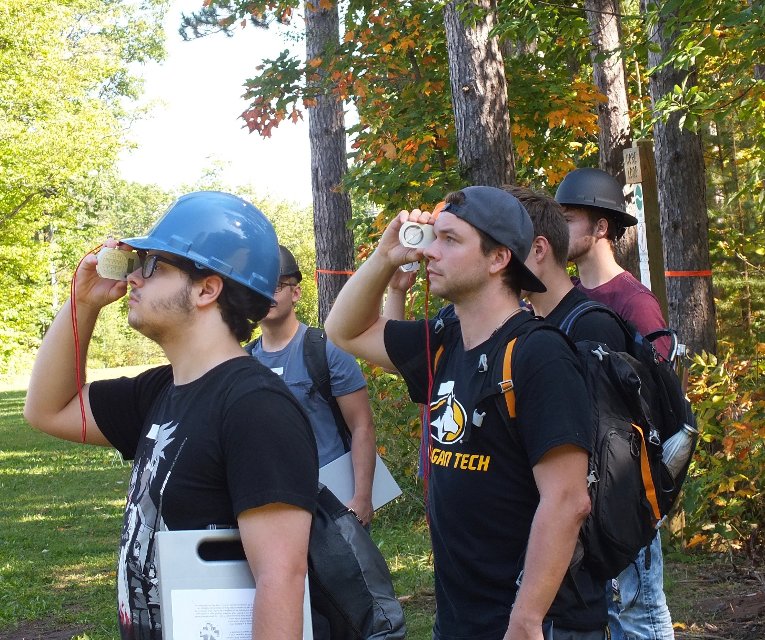
Wood Wisdom
The portable sawmill arrives in the back of a pickup and is set up in short order. Forestry and Environmental Resource Management (FERM) instructor Jim Schmierer says demonstrations for first-year classes began a couple of years ago, although tree felling (and planting) has been going on for decades.
There's always a reason for the chosen trees to come down, Schmierer says, pointing to a maple cut down earlier in the week. "The tree had a bad fork, and it was leaning out with the defect—likely to get hit with the groomer. If we think about the broader sustainability, these are trees we grow, enjoy, use and leave for habitat," he says.
"Sustainability is easy to talk about, but better to practice."Jim Schmierer, FERM
What Schmierer refers to as "downstream uses" abound. Some timbers return to recreation trails as rails, bridges and other infrastructure. Some will be used at Michigan Tech's Ford Center and Forest in Alberta for the September 30 Woodchuck Games and other timber sports practices and competitions. Slabs become art projects. Or hunting blinds. Branches are left for habitat. In the closed-loop system, no wood is wasted.
Schmierer also has his eye on "a piece with character," well-suited for benches on the John Wheeler trail, a memorial to a fourth-year Michigan Tech forestry student killed in a car accident in November 2016.
"He would have been out here with us today," says Schmierer.
FERM Stands for Fun
That's how Schmierer translates the acronym. Judging by students who repeat the for-credit real-life forestry class, he's not inaccurate. The FERM is a Michigan Tech signature program that focuses on field work, service learning and professional development on campus and across the community. Today, FERM students teach first-year foresters how to fell and saw pre-selected trees. Tomorrow, they could be assessing a timber stand for a local property owner, installing wildlife cameras, improving trails in north Houghton County—or hosting the Woodchuck Games.
How much wood can a Husky chuck?
Find out this weekend in Alberta, when the Michigan Tech Forestry Club hosts Iowa State for the Woodchuck Games, a timber sports competition focused on sawing and chopping techniques, from double-bucks to underhand chucks. The event runs from 8 a.m. to 5 p.m. Saturday, September 30. Local 4-H’ers will sell refreshments. Everyone's welcome, says forestry club president Joe Lazzari, who describes it as a mini-conclave. The club tries to get in as much practice as possible before the 14-school Midwestern Forester's Conclave, sponsored by the Society of American Foresters, in the spring. It's also a good way to raise awareness about timber sports.
You don't have to be a forester to get in on the action. If you want to participate or have questions, contact Lazzari.
Michigan Technological University is an R1 public research university founded in 1885 in Houghton, and is home to nearly 7,500 students from more than 60 countries around the world. Consistently ranked among the best universities in the country for return on investment, Michigan's flagship technological university offers more than 185 undergraduate and graduate degree programs in science and technology, engineering, computing, forestry, business, health professions, humanities, mathematics, social sciences, and the arts. The rural campus is situated just miles from Lake Superior in Michigan's Upper Peninsula, offering year-round opportunities for outdoor adventure.
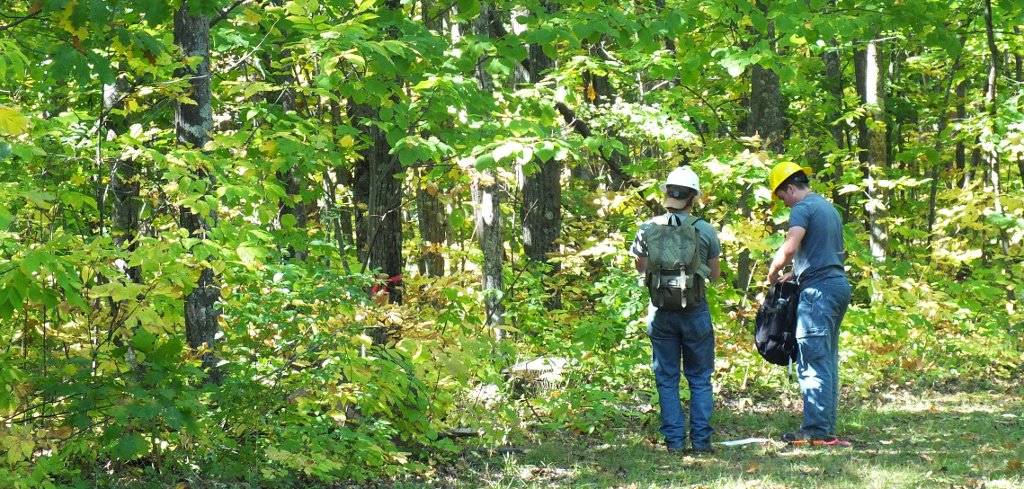

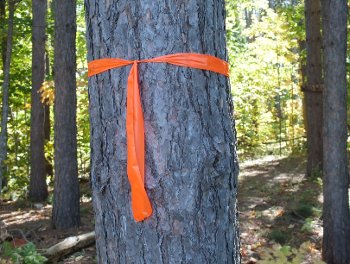
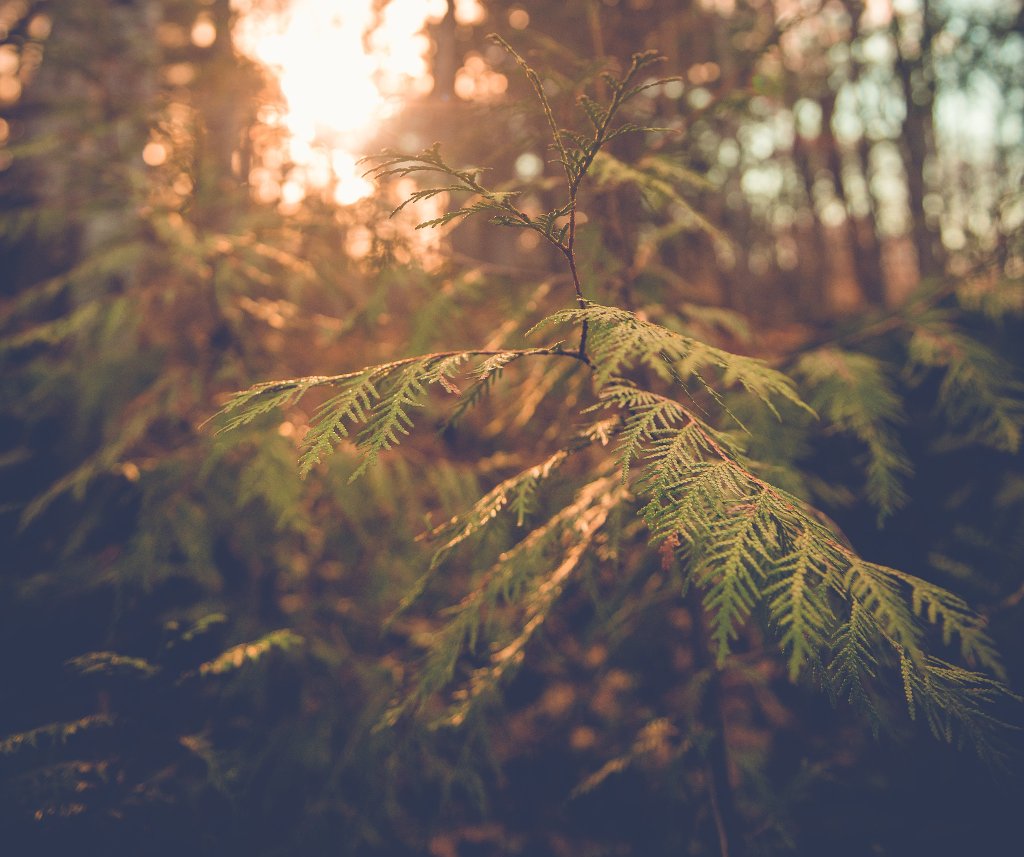
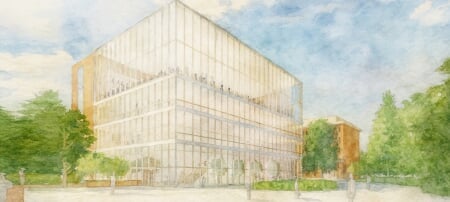
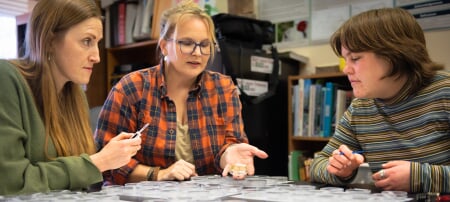
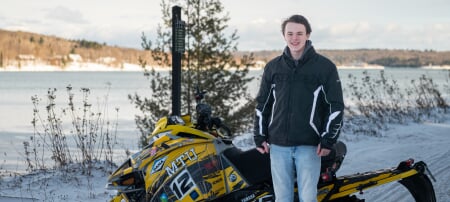
Comments